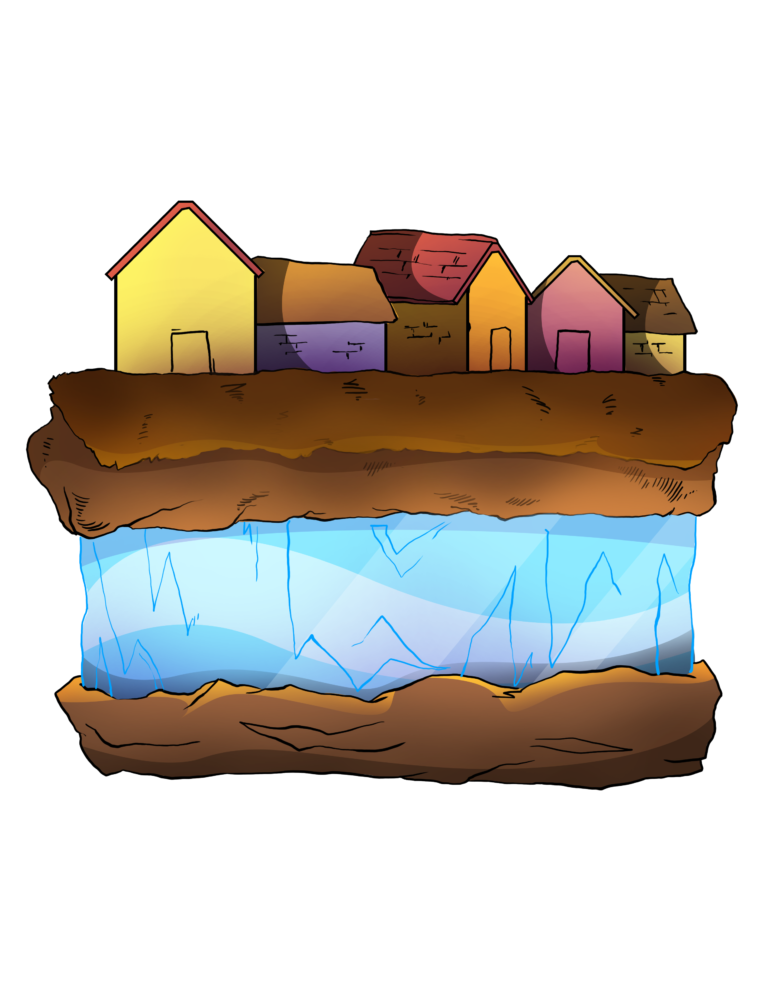If you are someone who regularly keeps up with climate change news, you have most likely heard of “permafrost.” However, not many people are aware of its meaning. What is permafrost? Why has it become the subject of such intense scientific investigation? And why should we care about it?
Put simply, permafrost is a kind of rock or soil found in the northernmost regions of the planet, as well as at high altitudes. It can also be described as sediment that remains frozen over the course of two or more consecutive years. In total, the permafrost covers more than 23 million square kilometres of the northern hemisphere.
Directly above this sediment is the active layer—a layer of earth which naturally freezes and thaws every year. In some areas, the active layer might also be covered by ice. The ice sheet and active layer naturally undergo freeze-thaw cycles on an annual basis, while the permafrost usually remains frozen. If the permafrost melts, it can pose a significant hazard for humans and the biosphere.
There are a few reasons why current permafrost thawing rates are faster than ever before. The short explanation is climate change. More local factors include things like heat directly generated by human activity, such as heat from underground pipes carrying hot water. In general, urbanization in the Arctic Circle has had a large impact.
The rise in global temperatures is more easily felt at the North and South poles, given that these areas warm twice as fast as the rest of the planet. Scientists have suggested that an increment of 1°C in the average global temperature could result in the melting of approximately 4 million square kilometres of permafrost landmass.
That is, 17 per cent of the world’s permafrost is at risk of thawing with every degree by which global temperatures rise.
This thawing has some serious ramifications. The permafrost is home to some of the planet’s largest carbon deposits, as organic matter from dead animals and plants has accumulated in the tundra subsurface over thousands of years. Like all other organisms, these contain organic carbon which is degraded upon death. However, after dying, these remains quickly became frozen and their decay did not take place. These remains have thus been well-preserved by the permafrost, which has prevented their degradation by bacteria and other soil micro-organisms.
Permafrost thawing is leading to the breakdown of the organic matter by microbes. Subsequently, it is released in the form of greenhouse gases (GHGs). These GHGs include carbon dioxide and methane, the latter being 30 times more potent than the former. These GHG emissions further contribute to global warming, because there is about double the amount of carbon stored in the permafrost as there already is currently in the atmosphere.
Thawing permafrost also has consequences beyond the changing climate. For instance, it is leading to more frequent landslides and other kinds of mass movements, bringing destruction to infrastructure in northern communities. These are typically more remote and isolated, making the return to normalcy challenging.
Another hazard is the resurfacing of pathogenic microorganisms, which leads to a resurgence of long-eradicated diseases. This presents a risk as major disease outbreaks are possible, threatening to undo much of the work done in the field of public health to eradicate these diseases in the first place. Other ramifications include the release of toxins such as mercury, which could infiltrate and severely contaminate the food chain down the line.
According to Better World International, a few things that can help slow the thawing of the permafrost are planting trees to balance the increase in carbon dioxide, using less heat and air conditioning, driving less, and saving electricity.
The thawing of the permafrost is a global catastrophe difficult to contain. Once triggered, it kick-starts an unstoppable, vicious cycle. So, it is imperative that we do all we can to prevent the permafrost from fully thawing.
Graphic by Manoj Thayalan




![Here’s how your favorite media platforms shape your world view without you realizing it Advertising revenue and subscriptions are the main source of income for news outlets. [Graphic by Sara Mizannojehdehi]](https://charlatan.ca/wp-content/uploads/2021/07/11BE7ADB-1CC8-46E8-ADB4-568B3C7F1265-218x150.jpeg)

